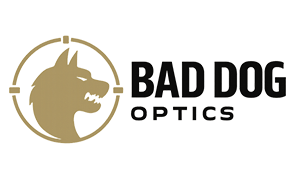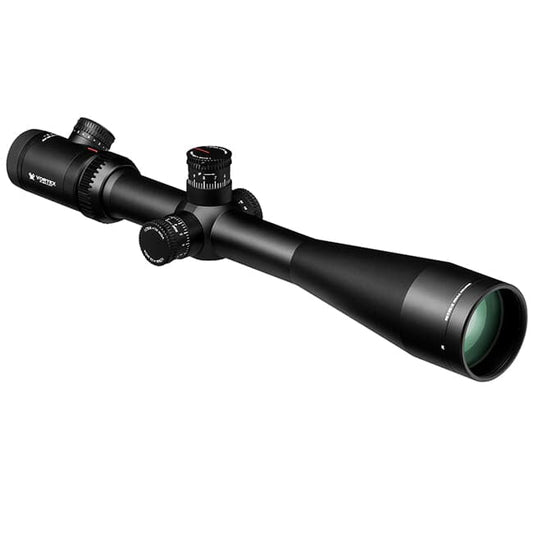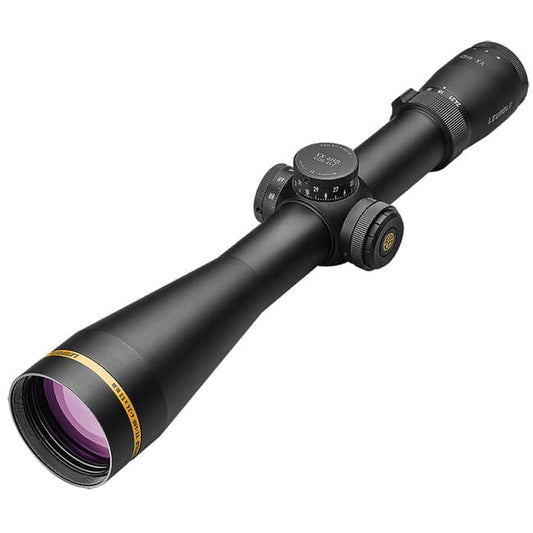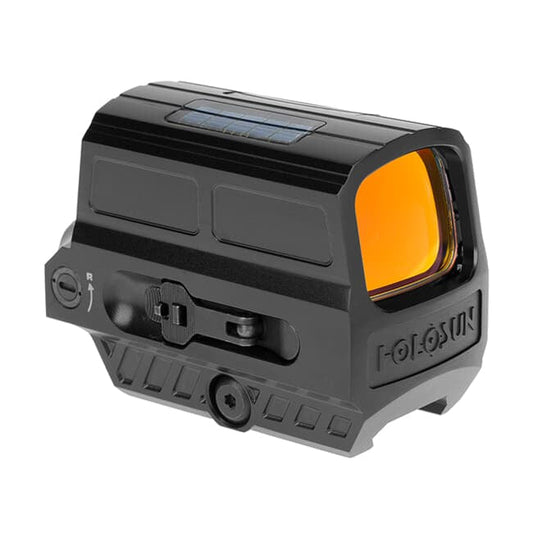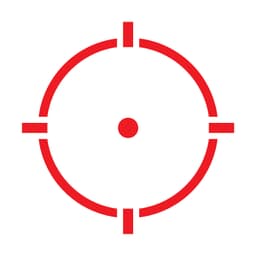How To Choose The Right Rifle Scope: The Ultimate Guide
Rifle scope trends shift like the wind, chasing rifle designs from classic 3-9x hunters to AR-friendly LPVOs and massive 5-25x long-range beasts. But the latest fad isn't always the right fit for you. Forget the marketing fluff; choosing the right optic comes down to matching its capabilities to your specific rifle and how you actually shoot.
I've put plenty of scopes through their paces, looking past the hype to see what really works. We'll break down the essential features – magnification, reticles, turrets, glass quality – based on real-world use. Let's cut through the confusion and find the scope that will help you make the shot, every time.
Choosing Your Scope Shouldn't Be a Shot in the Dark
Picking your first, second, or even third scope feels like a big deal. Maybe you bought one before and it was a total bust – we've all been there. My goal here isn't to claim I know everything, but I've looked through enough glass to learn a few things the hard way. Let's make sure your next scope purchase is one you feel good about.
This guide is built on practical experience, not just specs on a page. We'll cover what actually matters when you're behind the rifle. Forget the marketing fluff; we're talking real-world performance and usability. By the end, you'll have a clear path to choosing the right rifle scope.
Match the Scope to Your Mission: Rifle Purpose is Key
Before you even look at scopes, think about the rifle. What's its main job? A scope that's perfect for a benchrest rifle will likely be miserable on a lightweight mountain rig. Define the primary purpose first, and the scope choice becomes much clearer.
Are you moving this scope between rifles? You'll want versatility. Mostly punching paper at the range? Higher magnification might be fine. Need something for your AR? An LPVO is likely the ticket. Trying long-range precision? That demands specific features. Let's break it down.
Hunting Rifles
For hunting, reliability is paramount. You need a scope that holds zero, resists fog, and handles bumps. Magnification should match your typical hunting distances – often less than you think. A simple, clean reticle is usually best for quick target acquisition.
Look for:
- Weatherproofing (waterproof/fog proof)
- Durable construction
- Appropriate magnification range (e.g., 3-9x, 3-12x, 4-16x)
- Clear glass for low light
- Often, capped turrets to prevent accidental adjustment
Target & Range Rifles
When shooting targets, you often have more time. Higher magnification helps resolve detail at distance. Features like precise, repeatable turret adjustments and parallax correction become crucial for consistent accuracy. Reticle complexity can be helpful here.
Look for:
- Higher magnification ranges (e.g., 5-25x, 6-24x)
- Exposed, tactile turrets for dialing adjustments
- Parallax adjustment (Side Focus or AO)
- Potentially more complex reticles (MOA/MRAD grids)
AR-Platform Rifles (LPVOs)
ARs often benefit from Low Power Variable Optics (LPVOs). These typically start at true 1x magnification for fast, red-dot-like performance up close. They can then zoom up to 4x, 6x, 8x, or even 10x for longer shots.
Look for:
- True 1x low-end magnification (1-6x, 1-8x, 1-10x are common)
- Daylight-bright reticle illumination
- Appropriate reticle for speed and some distance holds
- Often compact and relatively lightweight
Long-Range Precision Rifles
This is where features really stack up. Long-range scopes need excellent glass, high magnification, precise turrets, and usually a First Focal Plane (FFP) reticle. These are specialized tools for hitting distant targets reliably. Leupold Mark 5HD and Nightforce NX8 are popular examples.
Look for:
- High magnification (e.g., 5-25x56, 7-35x)
- First Focal Plane (FFP) reticle
- Precise, repeatable exposed turrets with matching units (MOA/MOA or MRAD/MRAD)
- Zero stop feature
- Excellent glass clarity and resolution
Decoding Scope Numbers: Magnification Power (e.g., 3-9x)
Those numbers on a scope, like 3-9x40, tell a story. The first part, "3-9x," is the magnification range. This scope magnifies the image from a minimum of 3 times life-size (3x) up to a maximum of 9 times life-size (9x).
A lower number means a wider view, good for closer shots or scanning. A higher number zooms you in for more detail on distant targets. A fixed power scope would just have one number, like "4x" or "10x". Variable power offers more flexibility.
Decoding Scope Numbers: Objective Lens Diameter (e.g., x40mm)
The second number, like the "40" in 3-9x40mm, is the objective lens diameter measured in millimeters. This is the big lens at the front of the scope (opposite the eyepiece). It's the primary light-gathering part of the scope.
A larger objective lens can potentially gather more light. However, its impact on brightness isn't as simple as "bigger is better." It works together with magnification and lens quality. A 40mm or 44mm objective is very common and versatile.
Objective Lens Size vs. Performance: Myths and Realities
Many shooters think a huge objective lens (like 50mm or 56mm) automatically means a super bright scope. It's more complicated than that. While a larger lens gathers more light, how much usable light reaches your eye depends on other factors.
Exit Pupil Explained
The exit pupil is the beam of light leaving the eyepiece that enters your eye. You calculate it by dividing the objective lens diameter by the current magnification. Example: a 3-9x40mm scope set at 8x has an exit pupil of 5mm (40 ÷ 8 = 5). Your eye's pupil dilates in low light (up to ~7mm when young, less as you age).
If the exit pupil is larger than your eye's pupil, the extra light is wasted. A larger exit pupil makes it easier to position your eye behind the scope and see the full image, especially at lower magnifications. But simply having a massive objective doesn't guarantee brightness if the exit pupil is already larger than your eye can use.
Low Light Performance Factors
True low-light performance comes from a combination of things:
- Good glass quality: Reduces light loss internally.
- Effective lens coatings: Increase light transmission through each lens element.
- An exit pupil matched to your eye's dilation in the conditions.
- Appropriate magnification (lower power = larger exit pupil).
A high-quality 40mm or 44mm scope can often outperform a cheap 56mm scope in low light because of better glass and coatings.
Weight and Mounting Considerations
Larger objective lenses add weight and bulk. They also require taller scope rings to clear the barrel. This raises the scope higher above the bore, which can affect cheek weld and consistency. For a hunting rifle you carry a lot, a more moderate objective size (42mm, 44mm) is often a better balance.
Scope Tube Diameter Debunked: 1-inch vs. 30mm vs. 34mm
You'll see main tube diameters of 1 inch (25.4mm), 30mm, and 34mm. There's a common myth that larger tubes transmit more light. This isn't true. Light passes through the lenses, not the tube walls like water through a pipe.
What Larger Tubes Actually Do (Adjustment Range)
The real benefit of a larger diameter tube (like 30mm or 34mm compared to 1 inch) is providing more internal space. This space allows for a greater range of elevation and windage adjustment within the scope's turret system. This is primarily useful for long-range shooting where you need lots of elevation travel.
| Tube Diameter | Primary Benefit | Common Uses | Considerations |
|---|---|---|---|
| 1-inch | Compact, lighter weight, lower cost | Hunting, general use, rimfire | Less internal adjustment range |
| 30mm | Good balance of size & adjustment | Versatile hunting, target, some long range | Heavier/costlier than 1-inch |
| 34mm | Maximum adjustment range | Serious long range, precision rifle competition | Heaviest, most expensive, needs robust mount |
Trade-offs: Weight, Cost, and Mounting
The downsides? Larger tubes mean more material, which adds weight and cost. Scopes with 34mm tubes, especially entry-level ones, can be significantly heavier and start at higher price points. You'll also need the corresponding size rings or mount (rings and mounts). For typical hunting or moderate range shooting, a 1-inch or 30mm tube is often perfectly adequate.
Fixed vs. Variable Power: Weighing Your Options
Fixed power scopes have one magnification setting (e.g., 4x, 6x, 10x). They are generally simpler, lighter, and potentially more durable due to fewer moving parts. Some shooters appreciate the simplicity. However, they lack flexibility.
Variable power scopes (e.g., 3-9x, 4-16x, 5-25x) offer a range of magnification. This versatility is huge. You can use low power for a wide view and close shots, and high power for precision at distance. For most shooters, especially beginners, a variable power scope is the way to go.
Focal Plane Showdown: First Focal Plane (FFP)
The focal plane determines where the reticle sits inside the scope. In a First Focal Plane (FFP) scope, the reticle is placed in front of the magnification lenses.
How FFP Works
Because the reticle is magnified along with the image, the reticle size appears to grow and shrink as you change magnification. The key benefit? The reticle's subtensions (hash marks for holdover or windage) remain accurate relative to the target at any magnification setting.
FFP Pros and Cons
- Pros: Holdover marks are always accurate, essential for long-range shooters who use the reticle for corrections without dialing turrets. Favored for precision rifle series (PRS) and tactical applications.
- Cons: The reticle can appear very small and hard to see at low power, or potentially thick and obstructive at high power. FFP scopes are often more expensive.
Focal Plane Showdown: Second Focal Plane (SFP)
In a Second Focal Plane (SFP) scope, the reticle is placed behind the magnification lenses.
How SFP Works
This means the reticle size appears constant regardless of the magnification setting. It always looks the same size to your eye. This is the traditional setup for most hunting scopes.
SFP Pros and Cons
- Pros: Reticle is always easy to see and the same apparent size. Often preferred for hunting where quick shots are common and the reticle isn't typically used for complex holdovers. Usually less expensive than FFP.
- Cons: Reticle subtensions (BDC marks, MOA/MRAD hashes) are only accurate at one specific magnification, usually the highest power. Using holdovers at other magnifications requires calculation or estimation.
Which Focal Plane is Right for You? Practical Considerations
So, FFP or SFP? If you're new to scopes or primarily hunting inside typical ranges (say, under 300-400 yards), SFP is often simpler and more user-friendly. The constant reticle size is easy to get used to. You typically sight in and hold dead-on or use simple BDC marks at max power if needed.
If you plan on shooting long range, learning complex reticle holds, or competing in disciplines like PRS, FFP is generally preferred. The ability to use accurate reticle holds at any magnification is a significant advantage for dialing less and shooting faster at varying distances. See them in person if possible to understand the difference.
| Feature | First Focal Plane (FFP) | Second Focal Plane (SFP) |
|---|---|---|
| Reticle Appearance | Changes size with magnification | Stays the same size |
| Subtension Accuracy | Accurate at all magnifications | Accurate only at one magnification (usually max) |
| Primary Use | Long range, precision, tactical | Hunting, general purpose, simpler uses |
| Low Power Visibility | Can be very small | Always easy to see |
| Cost | Generally more expensive | Generally less expensive |
| Best For... | Using complex reticle holds at any power | Simplicity, constant reticle view |
Magnification Mania: How Much Power Do You Really Need?
It's easy to get caught up wanting massive magnification. More power seems better, right? Not always. Excessive magnification comes with downsides. The higher you magnify, the more image wobble (from your heartbeat or slight movements) becomes apparent.
Understanding Field of View
Higher magnification also means a narrower field of view (FOV). FOV is how much area you can see side-to-side through the scope at a given distance. At 3x, you might see a large patch of woods. At 25x, you might only see a small part of a single deer. A narrow FOV makes finding targets harder, especially if they're moving. High magnification scopes require practice.
| Magnification Range | Typical Use Cases | Key Characteristics |
|---|---|---|
| 1-6x / 1-8x (LPVO) | AR platforms, 3-Gun, close-to-medium range tactical/hunting | True 1x, fast acquisition, wide FOV at low power |
| 2-7x / 3-9x | Classic hunting (woods, moderate distances), rimfire, general purpose | Versatile, good balance of FOV and magnification |
| 3-12x / 4-16x | All-around hunting (open country potential), some target shooting, varmints | More reach than 3-9x, still manageable FOV |
| 4.5-18x / 5-25x+ | Target shooting, long range hunting/precision, varmint specialist | High detail resolution, narrow FOV, parallax critical |
Common Magnification Ranges
There's a reason ranges like 3-9x, 3-12x, and 4-16x are incredibly popular. They offer a versatile balance for many hunting and shooting scenarios. For most new buyers, sticking below 20x maximum magnification is wise. Avoid getting sucked into needing extreme power unless your specific discipline demands it.
Reticle Rundown Part 1: Simple Hunting Styles
The reticle is your aiming point. Simple reticles excel at getting your eye centered quickly without clutter.
Duplex and Crosshairs
The classic Duplex reticle features thicker outer posts that draw your eye toward thinner crosshairs in the center. It's simple, effective, and great for general hunting. A plain crosshair is even simpler but can sometimes get lost against busy backgrounds.
Basic Bullet Drop Compensating (BDC) Reticles
BDC reticles add extra aiming points (dots or hash marks) below the main crosshair. These correspond to bullet drop at different ranges (e.g., 300, 400, 500 yards). They offer quick holdover references but are usually calibrated for specific ammunition types and environmental conditions. They work best in SFP scopes when used at the designated magnification (usually max power).
Reticle Rundown Part 2: Advanced Precision Reticles
For long-range shooting or dialing corrections, more complex reticles offer precise aiming and measurement capabilities.
MOA vs. MRAD Grids ("Christmas Trees")
These reticles feature grid patterns based on Minutes of Angle (MOA) or Milliradians (MRAD). They allow for precise holdovers for both elevation and windage. They often look like "Christmas trees" with hash marks extending downwards and outwards. Using these effectively requires understanding the MOA or MRAD system. Bushnell Elite Tactical scopes often feature these.
Matching Reticle and Turrets
Crucially, if you have an MOA or MRAD reticle, your turret adjustments should match. An MOA reticle should pair with MOA turrets (e.g., 1/4 MOA clicks). An MRAD reticle pairs with MRAD turrets (e.g., 0.1 MRAD clicks). Mixing systems (e.g., MOA reticle with MRAD turrets) is possible but adds unnecessary complexity and potential for error.
Illuminated Reticles: Necessity or Nice-to-Have?
An illuminated reticle uses battery power to light up the center aiming point or the entire reticle. Its main benefit is visibility in low light conditions (dawn/dusk) or against dark targets/backgrounds. A dimly lit red dot can make aiming much easier when standard black crosshairs disappear.
However, illumination relies on batteries, which can die. Good illumination systems offer multiple brightness settings, including very dim ones suitable for low light without flaring. For hunting, especially in twilight hours, illumination is a very valuable feature. For daytime range use, it's less critical but can still be helpful against certain targets.
Turret Types: Capped vs. Exposed
Turrets are the knobs used for adjusting elevation (up/down) and windage (left/right).
| Turret Type | Design | Primary Advantage | Best Use Case | Downsides |
|---|---|---|---|---|
| Capped | Covers protect adjustment knobs | Prevents accidental adjustments | Hunting, "set and forget" zero | Slower to make field adjustments |
| Exposed | No covers, taller, tactile knobs | Easy, fast dialing for elevation/wind | Long range, precision shooting, tactical use | Can be bumped off zero, less weatherproof |
Capped Turrets: Set and Forget
Capped turrets have protective caps covering the adjustment knobs. You remove the caps to sight in your rifle, then replace them. This prevents accidental bumps from changing your zero while hunting or carrying the rifle. They are generally more weatherproof and common on hunting scopes.
Exposed Turrets: Dialing for Distance
Exposed (or "tactical") turrets have no caps and are designed for frequent adjustment. Shooters use them to "dial" elevation or windage corrections for different distances or wind conditions. They are typically larger, more tactile, and have clear markings. These are standard on long-range and precision scopes.
Understanding Turret Adjustments: MOA vs. MRAD Clicks
Turrets adjust the reticle in small increments called "clicks." These clicks represent angular measurements: Minutes of Angle (MOA) or Milliradians (MRAD or Mils).
| Unit | Value at 100 Yards | Common Click Value | Primary User Base / Preference | Math Basis |
|---|---|---|---|---|
| MOA (Minute of Angle) | Approx. 1 inch | 1/4 or 1/2 MOA | Hunting, US-based shooters, Imperial | Imperial (inches/yards) |
| MRAD (Milliradian / Mil) | 3.6 inches | 0.1 MRAD | Precision, Tactical, International | Metric (cm/meters based) |
- MOA: 1 MOA is roughly 1 inch at 100 yards (precisely 1.047"). Common clicks are 1/4 MOA (approx. 0.25" at 100 yards) or 1/2 MOA. MOA is popular in the US, especially for hunting. Scopes with 1/4 MOA adjustments are common.
- MRAD: 1 MRAD is 3.6 inches at 100 yards (or 10 cm at 100 meters). Common clicks are 0.1 MRAD (0.36" at 100 yards). MRAD is often preferred in precision/tactical shooting due to easier calculations and communication.
Choose one system and stick with it for both reticle and turrets. Neither is inherently "better," just different systems of measurement.
Advanced Turret Features: Zero Stops & Locking Turrets
Higher-end scopes, especially those with exposed turrets, often have useful extra features.
- Zero Stop: This mechanism prevents you from dialing the elevation turret below your established zero range. After dialing up for a long shot, you can quickly return the turret down until it hits the stop, ensuring you're back at your zero without looking. Invaluable for preventing getting "lost" in your turret revolutions.
- Locking Turrets: These turrets require you to pull up or push a button before they can be turned. Once adjusted, you push them back down to lock them in place, preventing accidental movement. Adds another layer of security, especially useful on hunting rifles with exposed turrets.
Parallax Adjustment: What It Is and Why It Matters
Parallax is an optical effect where the reticle appears to shift relative to the target if your eye isn't perfectly centered behind the scope. It's most noticeable at higher magnifications and longer distances. Parallax error can cause missed shots.
Parallax adjustment focuses the target image onto the same focal plane as the reticle, eliminating this apparent shift. This results in a sharper target image and ensures the reticle stays on target even if your head position isn't perfect. Most scopes intended for shooting beyond ~100-150 yards or with magnification above ~10x-12x will have parallax adjustment.
Side Focus vs. Adjustable Objective (AO)
Parallax is adjusted in two main ways:
- Adjustable Objective (AO): A rotating ring on the objective bell at the front of the scope. Common on older designs or some rimfire/airgun scopes.
- Side Focus (SF): A third turret on the side of the scope, opposite the windage turret. This is more common now and generally easier to adjust while staying behind the rifle.
